Choosing the best type of knife for cutting vegetables makes a huge difference in overall cooking experience, taste, and texture of your recipes. Let’s be honest, vegetables form the base of virtually every dish out there. Whether you’re vegetarian or not, learning what knife to use and when to use it is a fundamental skill for cooks of all levels.
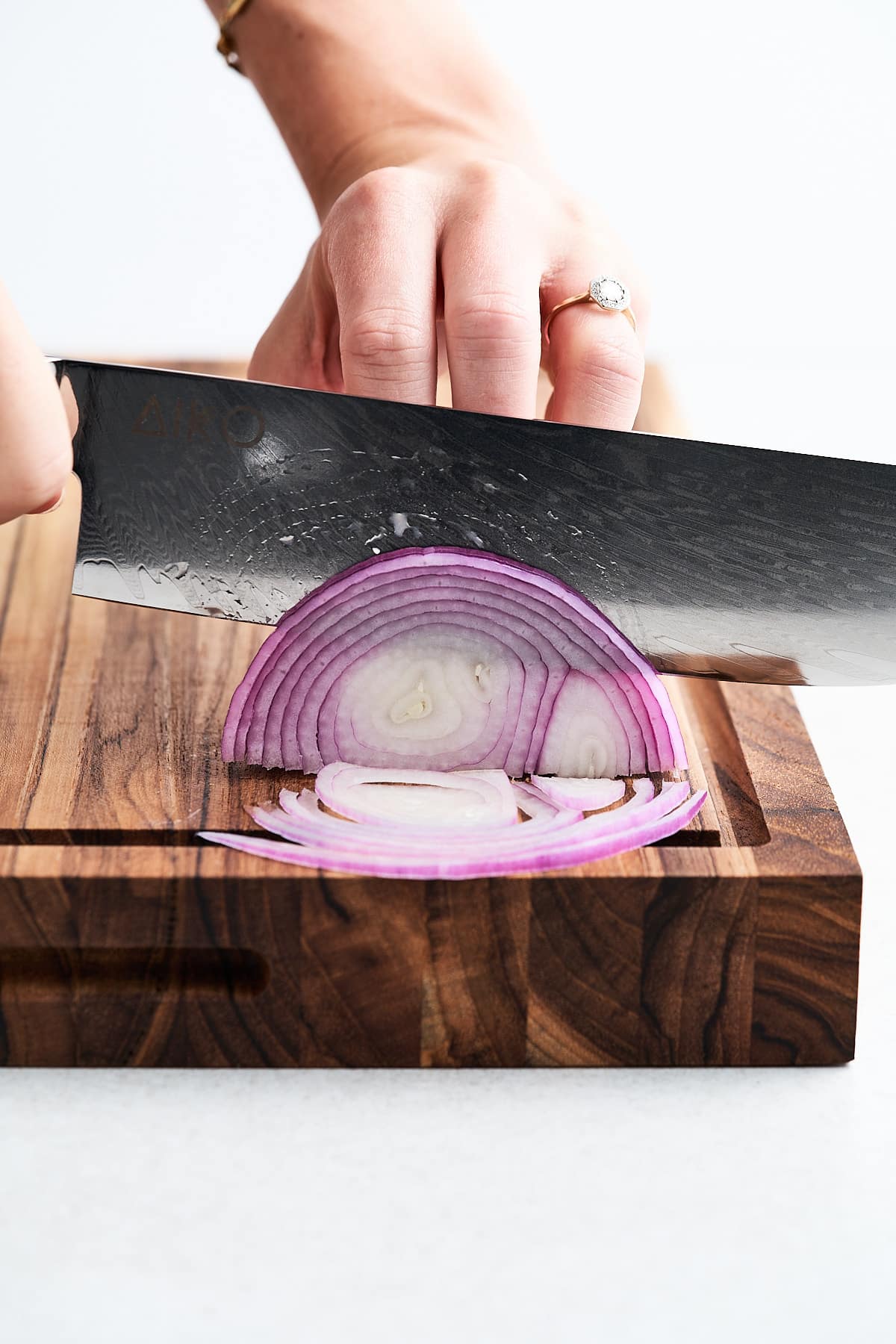
Why does choosing the right knife matter?
While any knife can “get the job done” in the kitchen, choosing the best knife for what you’re cutting means you’ll be able to achieve more precision and prevent injuries.
Using the right knife for the job not only results in better flavors, but it also makes your time in the kitchen so much easier! If you enjoy preparing dishes like buffalo cauliflower, air-fried vegetables, and butternut squash risotto at home, you deserve to have tools that will make cooking more fun!
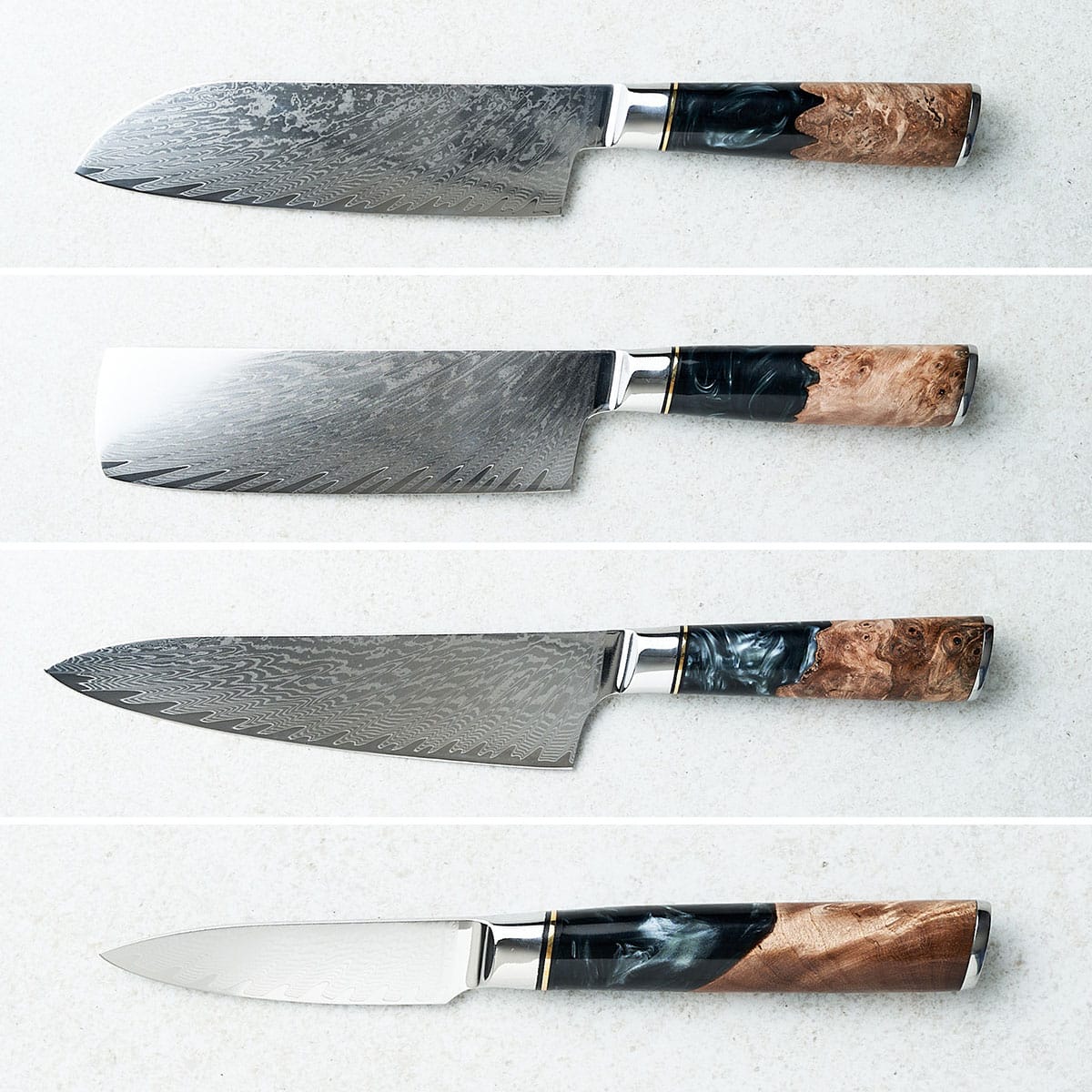
Most Common Types Of Knives
There are a variety of knives out there, especially for cutting vegetables. The following four types of knives are the most versatile and easy to find. Each one has its own advantages, especially when it comes to chopping vegetables.
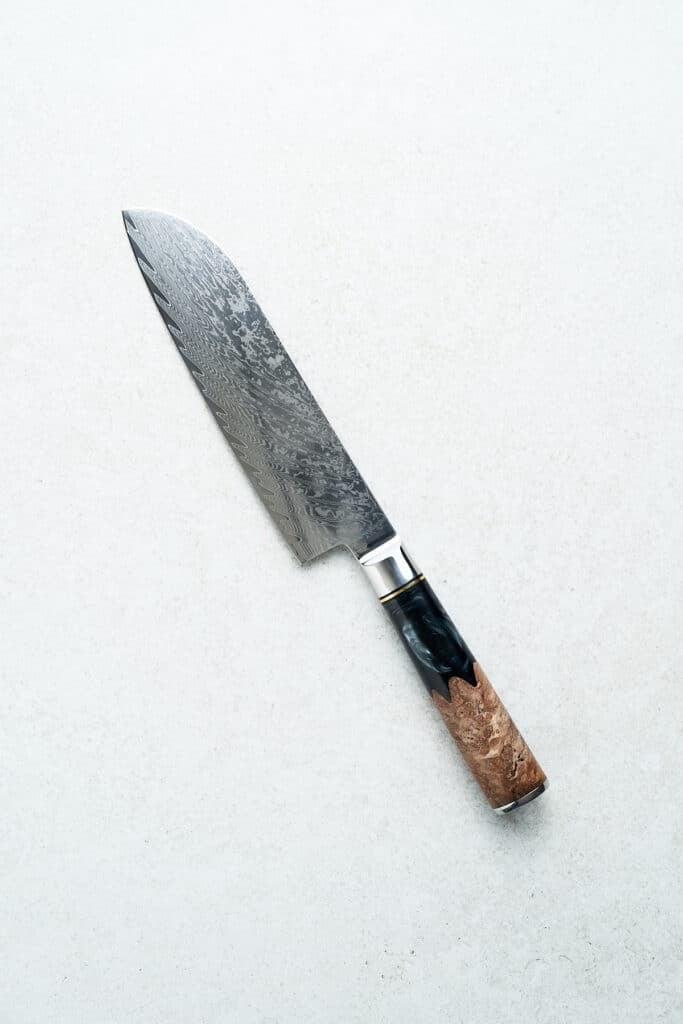
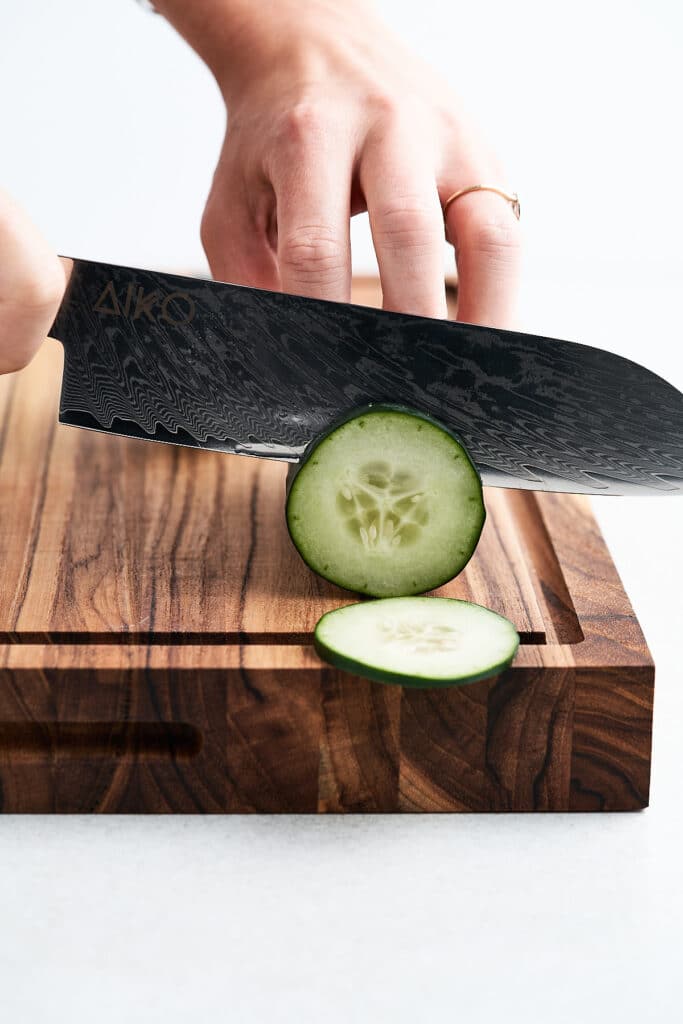
Santoku Knife
A Santoku knife is a Japanese-style knife known for its fairly short (5 to 7-inches), wide, and flat blade with a slightly rounded tip. The name “Santoku” translates to “three virtues,” referring to its ability to dice, slice, and mince efficiently.
The blade often features a Granton edge, which is made up of hollowed edges that prevent food from sticking to it. This knife is suitable for cutting a variety of vegetables, including those with tougher skin. A few examples include cucumbers, squash, and peppers.
Where To Buy It
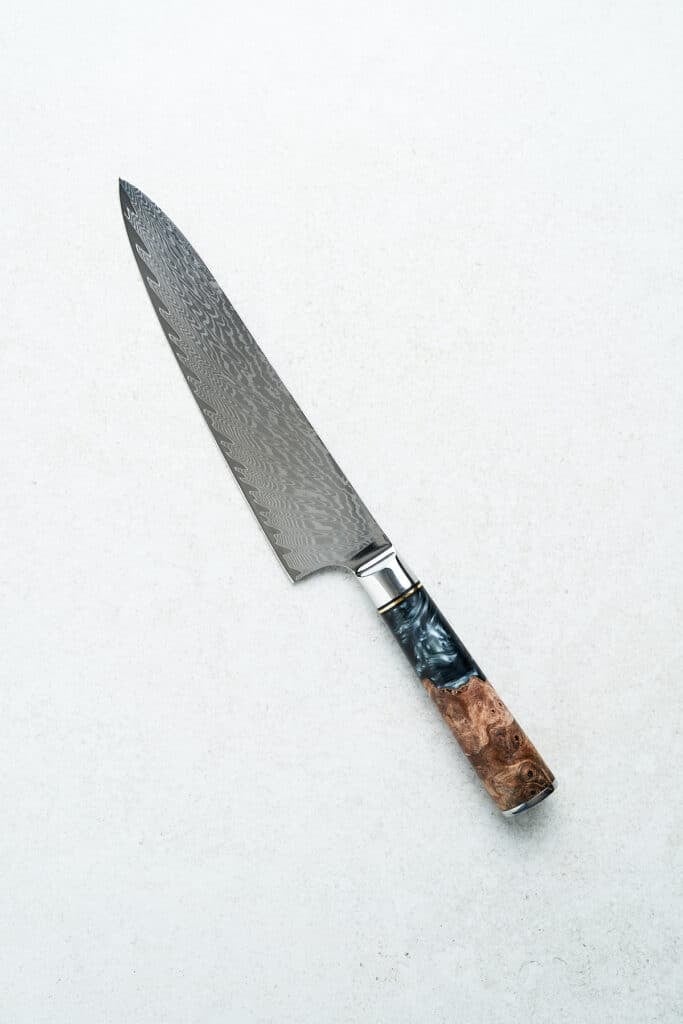
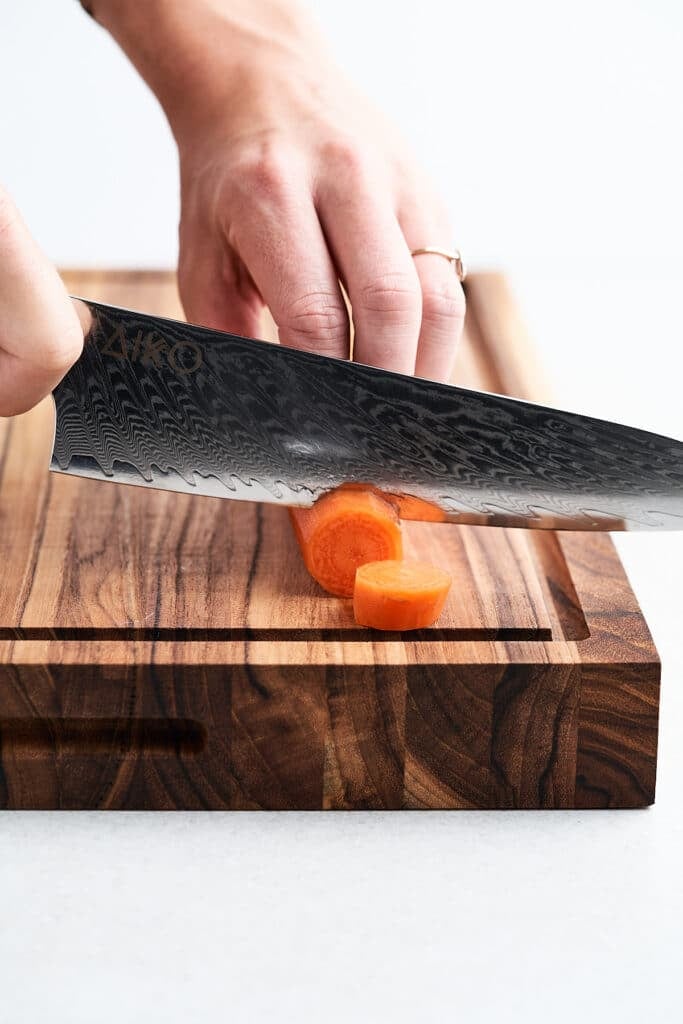
Chef’s Knife
A chef’s knife, also known as a cook’s knife, is another versatile and well-rounded kitchen tool. It is characterized by a pointed tip and a curved cutting edge that makes it easy to perform a rocking motion while chopping vegetables. Chef knives come in a range of lengths, typically between 8 to 10-inches long.
It’s a great knife for chopping, slicing, dicing, and mincing vegetables like potatoes, onions, peppers, carrots, etc. Larger bladed chef knives are a good choice for cutting winter squash. The design also makes it delicate enough to handle mincing smaller vegetables like garlic and fresh herbs.
Where To Buy It
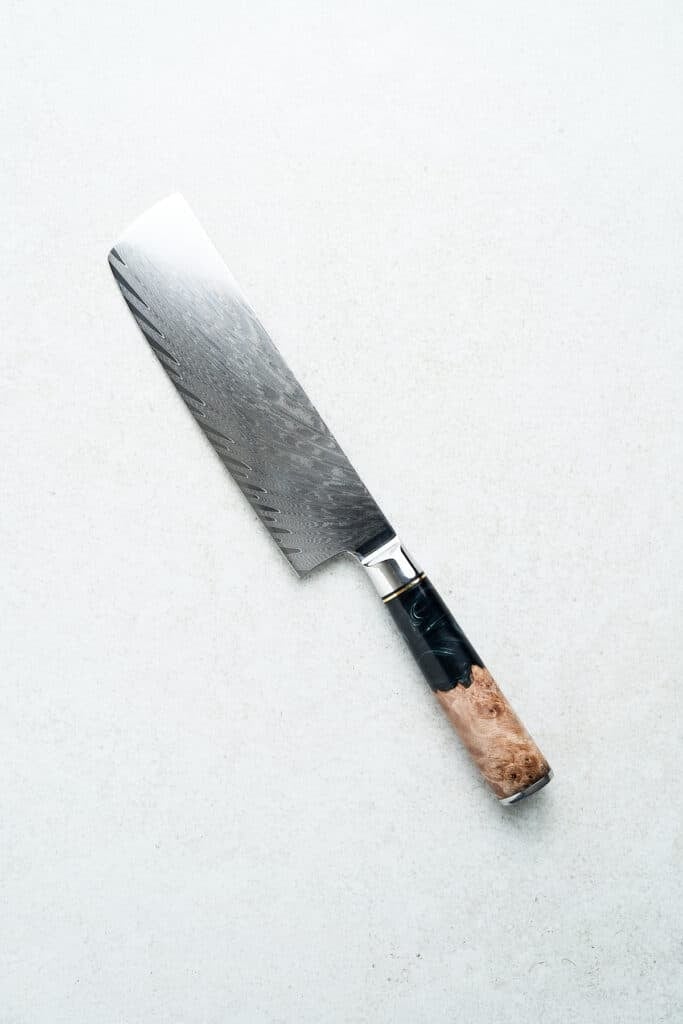
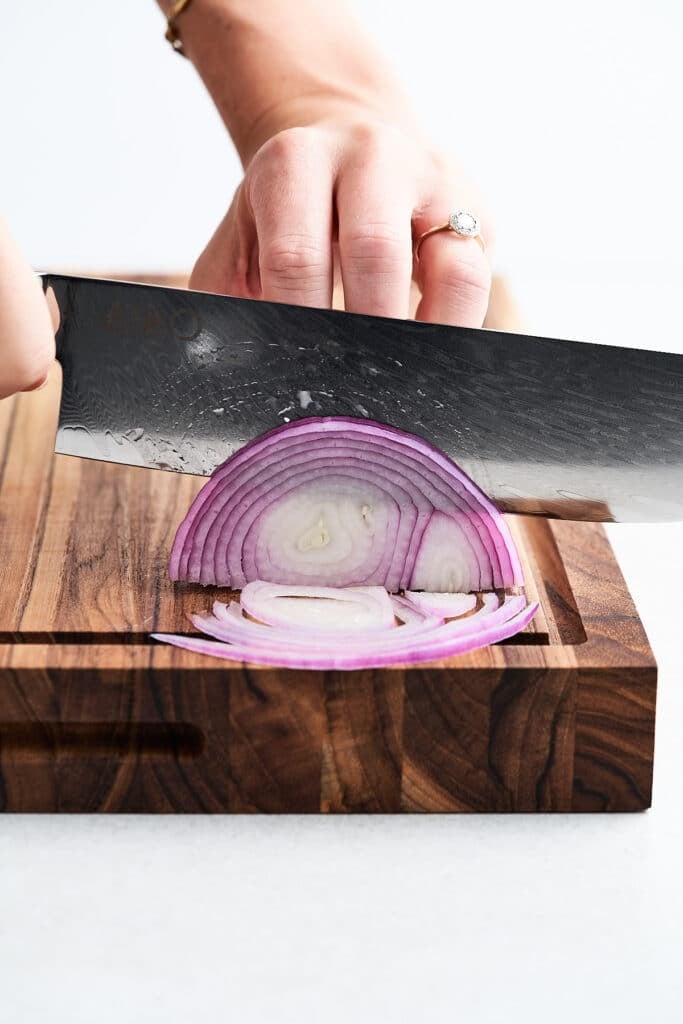
Nakiri Knife
The Nakiri knife (also spelled Nikiri) is a Japanese-style knife that’s specifically designed for chopping vegetables. It’s characterized by a rectangular, straight-edged, and thin blade that is usually about 5 to 7 inches in length.
Its design makes it ideal for achieving precise and razor thin slices of ingredients like cucumbers, carrots, and potatoes. The lightweight and delicate Nakiri is not to be confused with a cleaver knife, which is more suited for cutting large and tough winter squash and melons.
Where To Buy It
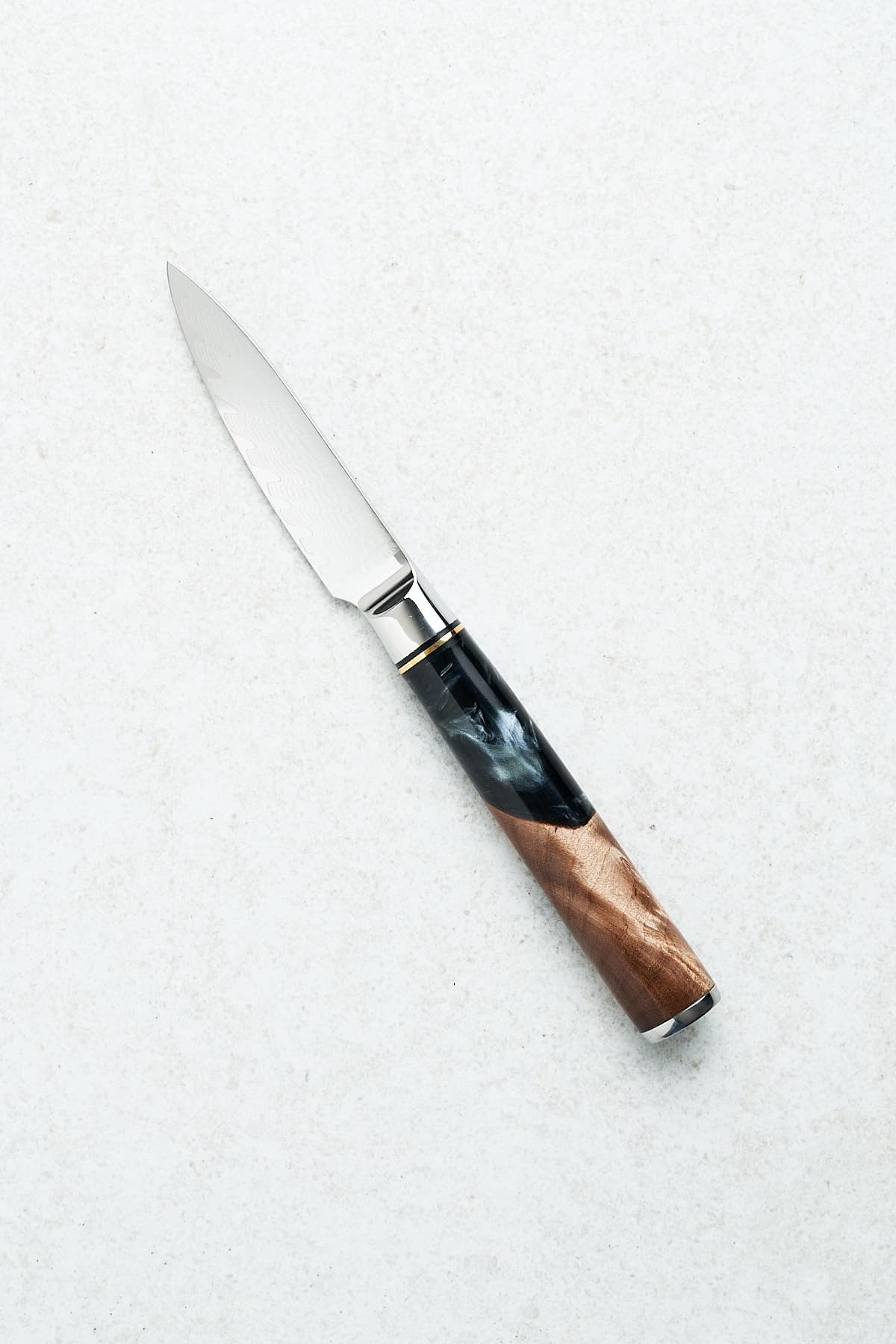
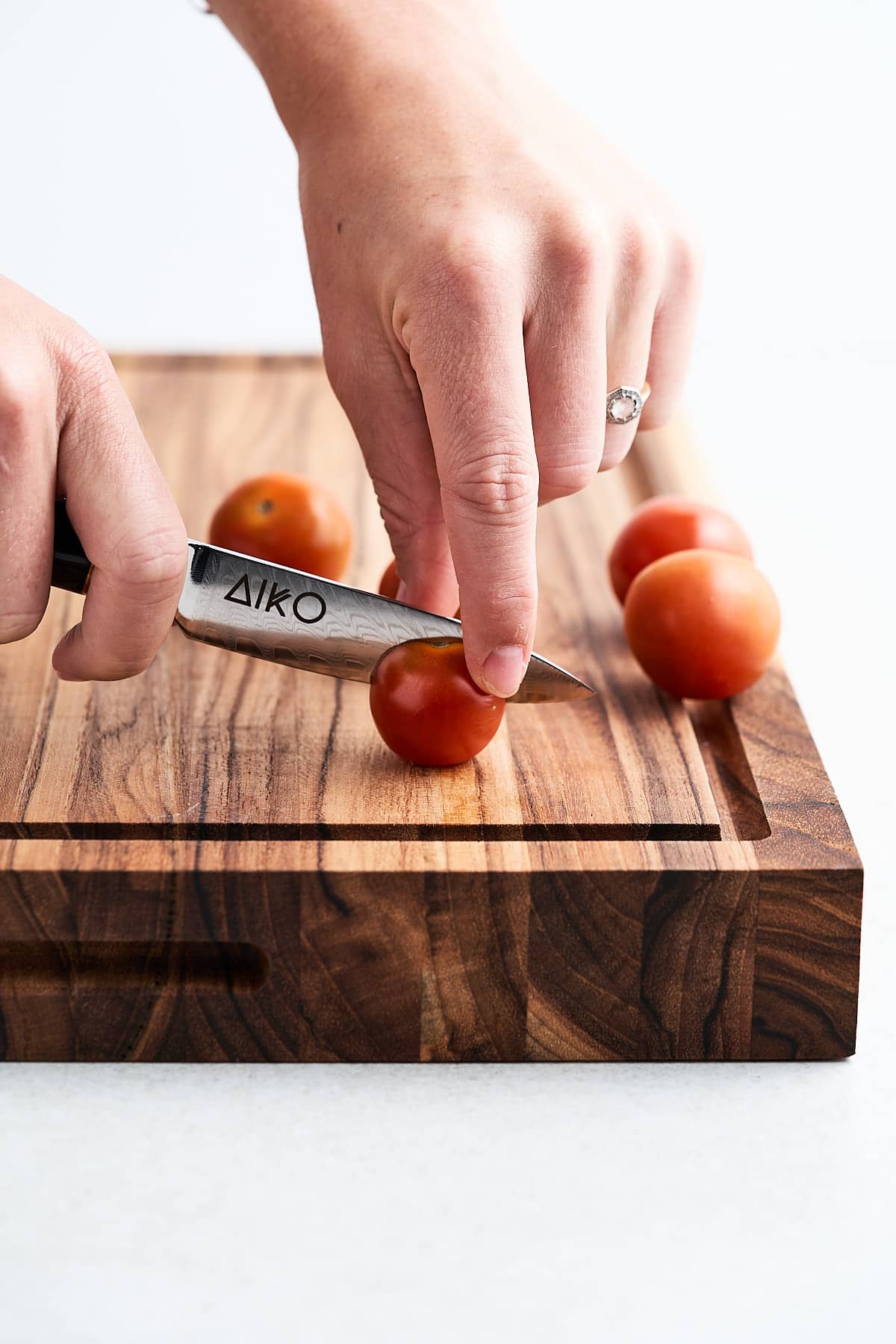
Paring Knife
Last, but definitely not least, paring knives are another vegetable-cutting essential! They come in various styles and lengths, but they generally have a small (3 to 4-inch) blade and a sharp tip that’s ideal for tiny vegetables and precision cuts.
Reach for a paring knife when you’re working with ingredients like garlic, shallots, mushrooms, strawberries, cherry tomatoes, etc. Paring knives are great for trimming blemishes, cutting oranges into supremes, and peeling carrots and potatoes. They are an incredibly useful tool to have in your vegetarian kitchen!
Where To Buy It
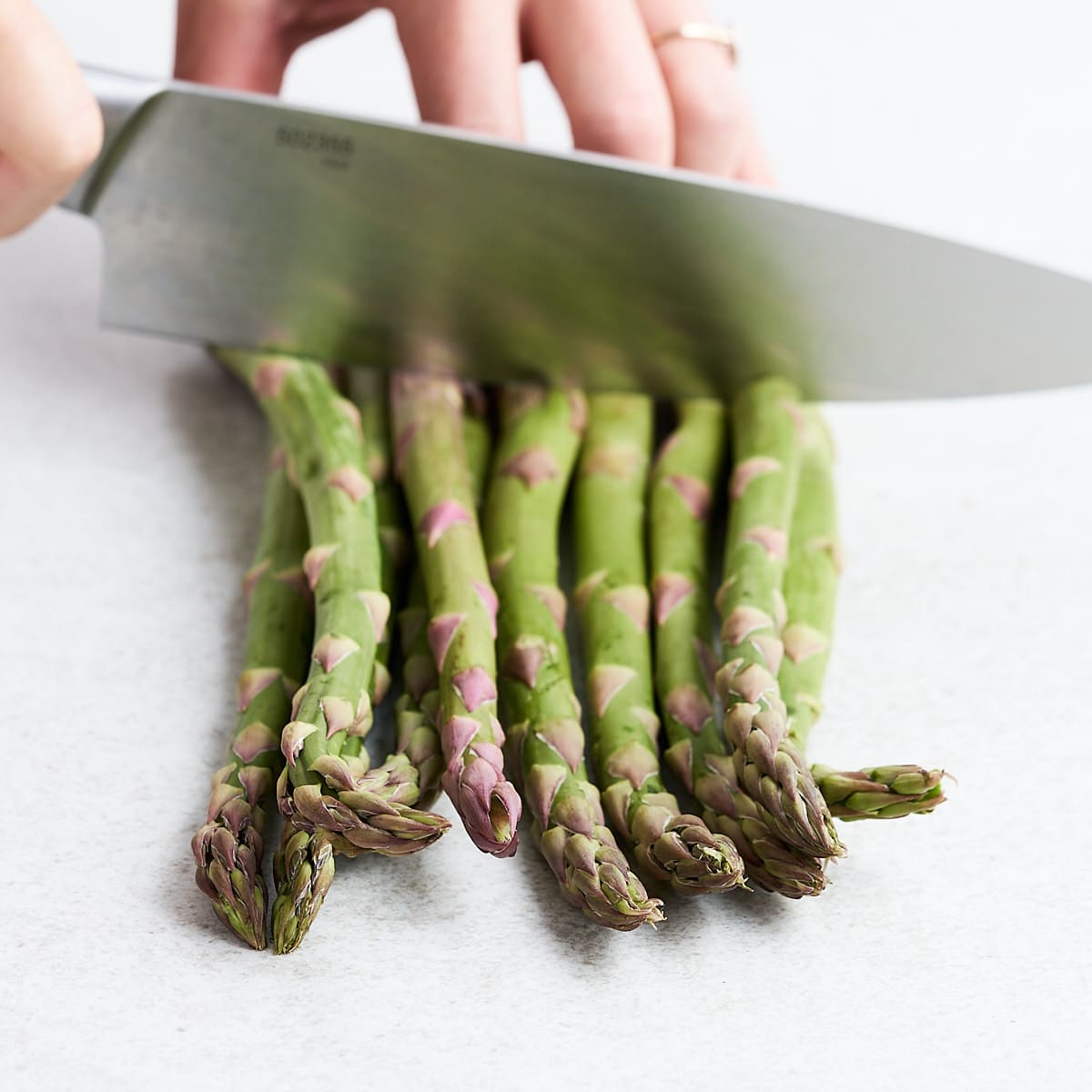
Expert tips for cutting vegetables
Here are a list of the top tips to know when it comes to choosing a knife and cutting vegetables:
Keep knives sharp: Remember to regularly sharpen your knives so they maintain their efficiency and precision. A sharp knife needs less force, so there’s less chance of injury.
Stable surface: Make sure you use a stable surface and a large, sturdy cutting board. If your board is still slipping, you can place a damp cloth or non-slip mat underneath it.
Proper grip: Hold the knife securely with a “pinch” grip, placing your thumb and index finger on the blade and wrapping the rest of your fingers on the handle.
Large vegetables: When it comes to large vegetables, make sure to cut them into manageable sizes. In other words, cut the larger pieces into smaller pieces rather than trying to cut a piece that’s unsafe.
Cutting technique: Practice various cuts, from slicing and mincing to chopping and dicing. This will help you understand and execute instructions found in recipes at home.
Good knife care: Clean and dry your knives thoroughly after each use, and store them in a knife sheath, block, or magnetic strip. This protects their edges and extends their lifespan.
Take your time: When you’re new to cutting, it may seem like you want to increase your speed. Make sure you focus on precision and control first, and speed will follow.
Now that you’re armed with the facts, you know how to choose the best knife for the job. It’s the key to achieving consistent and delicious results in all of your recipes!
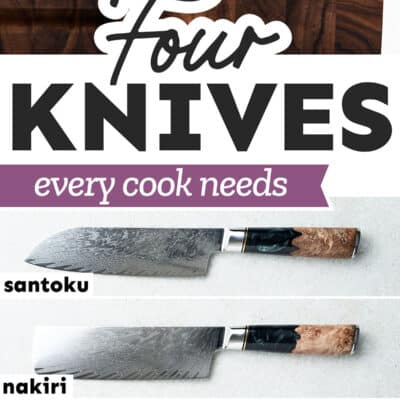
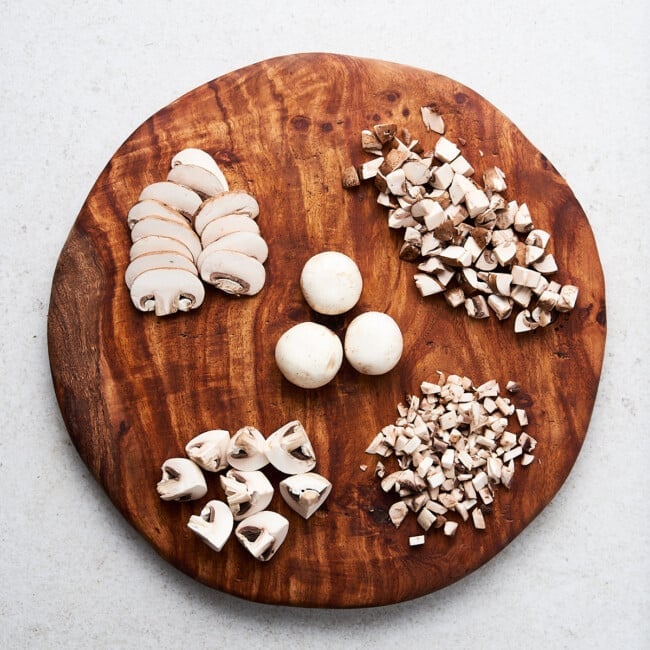
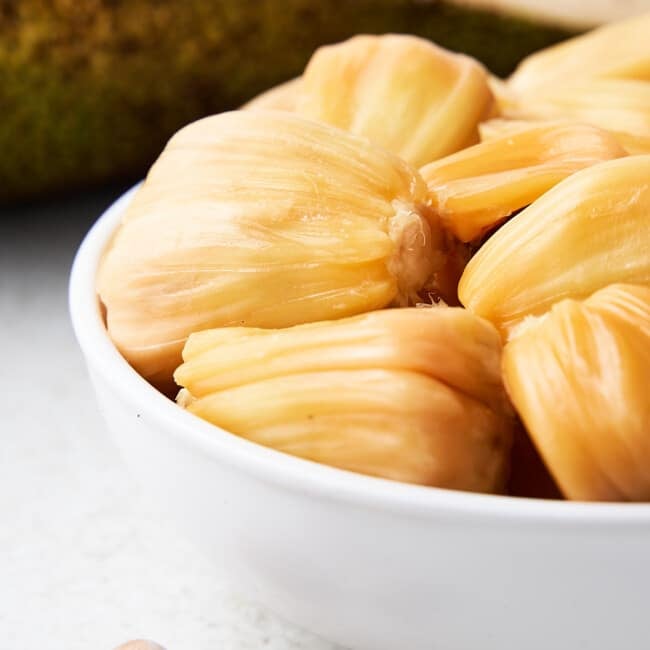
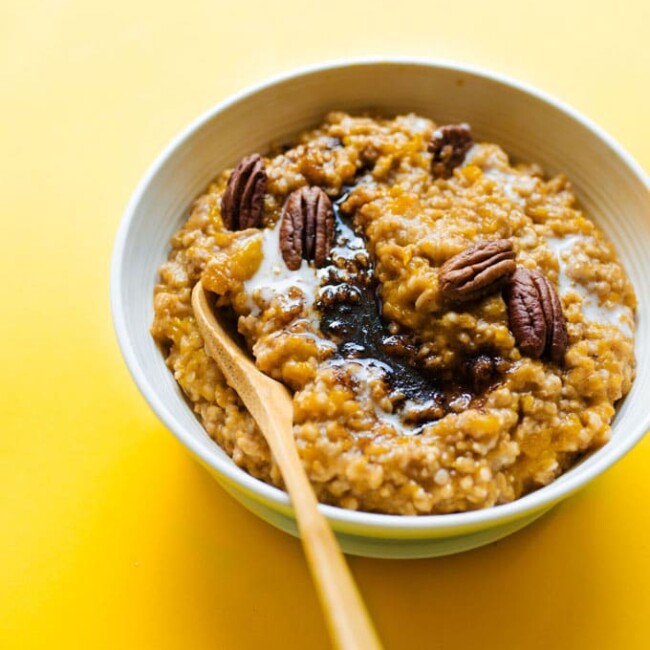
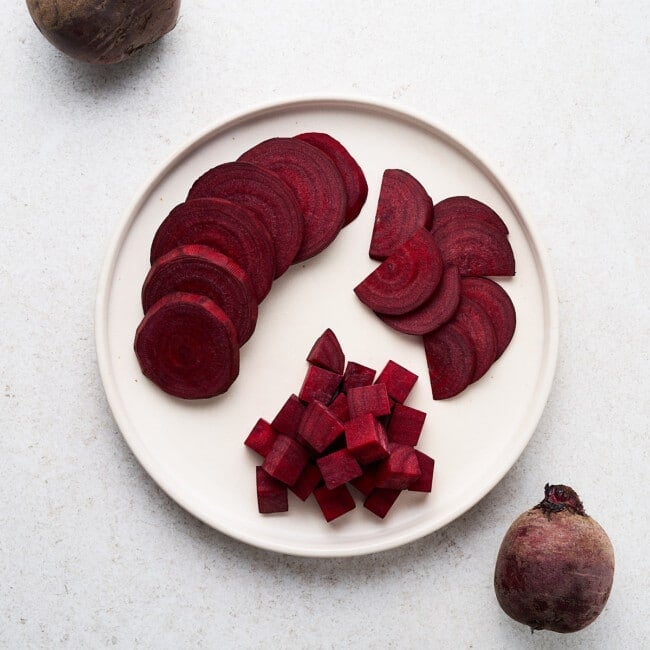
Leave a Comment